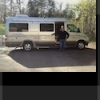
So this past week, I just installed an alarm system on every door, every window, as well as motion detectors, water detectors, freeze monitors and carbon monoxide and fire alarms on both levels of our two-story home. All of the alarms are monitored 24 x 7 and I have a remote app for my smartphone and computer that lets me check in on what’s happening back home.
The system I got is from a relatively new company called SimpliSafe. They have been doing a lot of advertising and promotion and they won me over with the ease by which I could install everything and, should we move from our sticks and bricks home, I can easily take it with me.
By the way, I have no connection with SimpliSafe. I purchased they system at full retail I paid around $800 for everything. Your cost may be less, depending on how many doors and windows you have. They just happen to be the company I choose. You can look around and pick the best company for you. I’m just sharing my solution here.
My whole system is wireless. Batteries in the various sensors last for years. And the master control system uses cellular technology to stay connected to the monitoring company, meaning a burglar can’t just cut a wire and disable a system, as thieves often do with conventional alarm systems.
I get an email and text alert if any alarm trips or should one of my sensors fail.
Here’s a video from the company that shows how easy it is to set up.
While the alarm system really adds to our peace of mind while traveling, it’s just one part of our home protection plan.
When we travel, I let my neighbors know where we are going and how long we expect to be away. They also have our cell number incase they notice anything that is not quite right. We have a friend who does a walk around every few days. We also notify our local police that we are out of town.
Something else: We stop all mail delivery. Years ago, on a long trip, we didn’t. A thief saw the bulging mailbox and took the mail. Among other things, he got ahold of those blank checks credit card companies often send out and promptly write several thousand dollars worth. The thief was caught by federal postal inspectors but it taught s a valuable lesson about letting mail accumulate. We also notified all our credit card companies not to send us those checks.
We pay most of our bills online and have opted for billing by email to avoid snail mail piles even when we are home.
Those are just a few of the things we do to watch over our house while we’re out Roadtreking.
How about you?
Entry sensor
- Read more...
- 2 comments
- 2494 views

